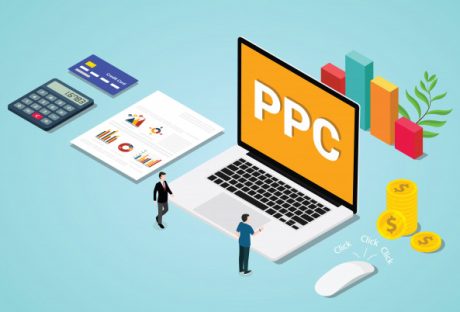Interview questions reveal candidates’ skills and personalities. Successful interviews need good questions. Before an interview, prepare and rehearse questions.
You will find several sample questions, and what the possible answers might mean as far as insight relating to a potential hire. Of course, there are no ideal answers, but some of the sample questions and answers could help you in finding the right candidate for your open position.
Why are excellent interview questions crucial?
Interview questions help businesses learn about applicants. An employer may interview candidates after posting a position and evaluating applications and cover letters. Real-time conversations with applicants demonstrate communication, social, and interpersonal abilities. Discover their humor, interests, and personalities.
Good questions help you assess a candidate’s fit for the position and organization. A successful interview shows prospective employers your professionalism and expertise. This may keep them engaged in the work.
Top three interview questions
Interviews are great for getting to know a candidate. Employers may evaluate candidates’ credentials and job suitability by asking the correct questions. Three great interview questions are:
Describe yourself.
This question asks candidates about their professional and personal interests. To learn about your interviewee, start with this question. Candidates usually have a response that covers their present job, past position, and professional objectives. Click here to read more about professional objectives and how to best develop one for a resume. This question might set up subsequent, more specialized queries.
Your candidate’s replies reveal their skills. A succinct yet informative response may indicate a good communicator. They may be good public speakers if they make eye contact and talk confidently. They are likely socially adept if they are courteous.
Why do you desire and suit this job?
Why they desire the job is a crucial interview question. Their response is an opportunity for them to convey their enthusiasm for the role, as well as their abilities and experience relevant to the responsibilities of the position. An individual must love their job to work hard and enthusiastically.
Asking why your applicant is a good match lets them discuss their relevant experiences, abilities, and credentials. This is crucial if the position has complicated, tight criteria.
Why work with us?
This question tests candidates’ understanding of your company’s purpose, beliefs, and ambitions. Candidates that have studied your organization before the interview should be able to answer this question confidently. Their response might demonstrate preparedness, detail, and love for your company. Employees must admire their company to work hard.
Some of the following questions to ask an interviewee are designed to help allow you find a good fit for the position you’re hiring for. For example, if the potential hire places high value on work being the central focus of their life at the moment, and is interviewing for an executive position, you may see a potential for a good fit in their answer.
- Your friends and coworkers describe you.
This inquiry will reveal your candidate’s work ethic and opinions. Characterize how friends and coworkers would describe you as personable, industrious, and detail oriented.
- What drives you?
This question assesses your candidate’s dedication to your company. Candidates might discuss their interest in assisting others or expanding their knowledge base, or they can discuss strategies for achieving goals such as making use of established procedures or working in teams, as possible responses to this question.
- Your greatest professional achievement?
This question lets you understand a particular outcome your applicant achieved. They have shown they can meet objectives and produce goods or services.
- Your biggest strength?
This popular inquiry evaluates a candidate’s most relevant skill. If they are seeking an administrative job, their greatest strength may be organization, or if they are applying for customer service, communication.
- Your biggest flaw?
This question assesses your candidate’s self-reflection. Look for methods they aim to address professional inadequacies in their response.
- Stress management?
Employees must be able to manage and overcome stress to perform difficult tasks, fulfill deadlines, or master new skills. Candidates may suggest taking pauses, deep breathing, or asking for support.
- Give me an example of your initiative.
Initiative-taking, self-disciplined workers who take initiative to fulfill key duties may benefit many occupations. This question might reveal if your applicant is innovative and autonomous.
- Share a problem-solving (https://en.wikipedia.org/wiki/Problem_solvin) experience.
Many jobs need problem-solving abilities, so ask your prospect this. Teachers must remain cool in emergencies since they deal with youngsters.
- Share a multitasking experience.
For organization, planning, and attention, ask your candidate this question. To finish on time, they must recognize their limits and ask for assistance.
- Tell me about accepting bad feedback.
Your candidate must be able to take criticism calmly and respectfully. This inquiry might also reveal your candidate’s enthusiasm for work improvement.
- Collaboration: what works?
This question tests teamwork. Respect, patience, and active listening may be their response.
- Organize how?
Most industries need organization. This question may reveal how your applicant organizes and tracks information.
- Your favorite aspect of this field?
This question tests candidates’ industry expertise. It is crucial they have researched the topic and know what they could accomplish.
- What do you dislike about this field?
This question evaluates the candidate’s understanding of the field’s drawbacks and resilience in challenging situations. They have a good work ethic if they see a difficulty and want to conquer it.
- How does this job match your career?
This inquiry might reveal your candidate’s job application ambitions. If you want long-term workers, this question is crucial.
- What is your five-year plan?
This question shows a candidate’s ability to plan. It also explains their interest in the position.
- Why did you quit?
To examine your candidate’s past performance, use this question. Many applicants want a better job or a career move.
Of course, tailoring your questions to be industry-specific and job-specific can be helpful, and there is no “one size fits all” approach to interviewing candidates. However, these questions can help you narrow down your possible candidates and get closer to hiring the right candidate for the position.
Additional:






















